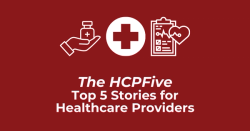
OR WAIT null SECS
Cardiovascular Risks in Childhood Cancer Survivors Often Overlooked, Undertreated
Using data from a large study of childhood cancer survivors and NHANES, investigators provide insight into the undertreatment and underdiagnosis of cardiovascular risk factors among survivors of childhood cancer compared to the general US population.
New research from the Childhood Cancer Survivor Study (CCSS) suggests childhood survivors of cancer are likely to have unrecognized or undertreated cardiovascular comorbidities.
Results of the study, which included data from nearly 1600 patients with childhood cancer who survived at least 5 years from 9 regions in the US, indicate survivors of childhood were 1.8-times more likely to be undertreated for cardiovascular risk factors, with hypertension and dyslipidemia the most commonly under diagnosed and undertreated risk factors among these patients.
“These findings make underdiagnosis and undertreatment significant concerns for the estimated half a million childhood cancer survivors living in the United States,” said lead study author Eric J. Chow, MD, MPH, an associate professor in clinical research and public health sciences at the Fred Hutchinson Cancer Center in Seattle, in a statement from the American Heart Association.
As the fields of cardiology and oncology progress individually, the field of cardiooncology has emerged as its own subspecialty and for good reason. As more and more data emerge, the relationship between certain forms of cancer and certain cancer therapies with increased cardiovascular risk has gone from suspected to undeniable. With this in mind, Chow and a team of colleagues from major institutions throughout the US sought to provide a comprehensive overview of the prevalence and predictors associated with underdiagnosis and undertreatment of modifiable cardiovascular risk factors among adult survivors of childhood cancer.
With this in mind, investigators designed a cross-sectional study of adult-aged survivors of childhood cancer treated with anthracyclines or chest radiotherapy from within CCSS. A large study launched in 1970 with the aim of recruiting childhood cancer survivors and describing their long-term health, CCSS coupled data related to more than 14,000 survivors over a period lasting more than 3 decades from the US and Canada. From US-based CCSS patients, investigators recruited survivors who were at least 18 years old, free of heart disease or heart failure, and living within 50 miles of nine major U.S. metropolitan areas to take part in a separate trial assessing the potential impact of telehealth strategies for improving cardiovascular outcomes in survivors of childhood cancer.
From this separate study, investigators identified 1591 participants were considered eligible and approached to participate in the separate telehealth study. Of these, 825 participants declined to consent for participation. Of the 766 who consented, 571 were ultimately considered eligible for inclusion in the analytic sample. A matched sample of patients from the National Health and Nutrition Examination Survey were identified to serve as the comparator cohort for the investigators' analyses. This sample included 345 patients.
The primary outcomes of interest were the risk of cardiovascular risk factor underdiagnosis and undertreatment among survivors compared against the NHANES sample. The specific risk factors of interest in the investigators’ analyses were hypertension, dyslipidemia, and diabetes. For the purpose of analysis, investigators used multivariable logistic regression to estimate odds ratios for underdiagnosis and undertreatment of risk factors. Compared to their counterparts from NHANES, survivors were more likely to have a preexisting cardiovascular disease risk factor (P <.05 for all factors).
Upon analysis, results indicated rates of cardiovascular risk factor underdiagnosis were similar among those in the survivor group (27.1%) compared with those in the NHANES sample (26.1%) (P=.73), but survivors of childhood cancer were more likely to be underrated than their counterparts from the NHANES sample (21.0% vs 13.9%; OR, 1.8 [95% CI, 1.2-2.7]; P=.007). Further analysis among the survivor group indicated the most underdiagnosed risk factor was hypertension, with hypertension underdiagnosed among 18.9% of survivors, while the most undertreated risk factor was dyslipidemia, which was untreated among 16.3% of survivors with dyslipidemia.
When assessing potential predicts of undertreatment or underdiagnosis, results indicated men and survivor who had overweight or obesity were more likely to be underdiagnosed and undertreated for cardiovascular disease risk factors. Additionally, further analysis suggested having multiple adverse lifestyle factors was associated with an increased likelihood of being undertreated (OR, 2.2 [95% CI, 1.1-4.5]) while greater health-related self-efficacy was associated with reduced likelihood of undertreatment (OR, 0.5 [95% CI, 0.3-0.8]).
“Serious heart disease is uncommon in young adults in the general population, which includes childhood cancer survivors, therefore, greater awareness of the significantly higher cardiovascular disease risk when there is a history of cancer is important,” Chow said. “Raising awareness among primary care professionals as well as improving survivors’ ability to self-manage their health may mitigate the increased risks. There are specialized heart disease risk calculators designed for cancer survivors, and those may be more accurate in predicting future cardiovascular disease risk than risk calculators designed for the general population.”
This study, “Underdiagnosis and Undertreatment of Modifiable Cardiovascular Risk Factors Among Survivors of Childhood Cancer,” was published in the Journal of the American Heart Association.


